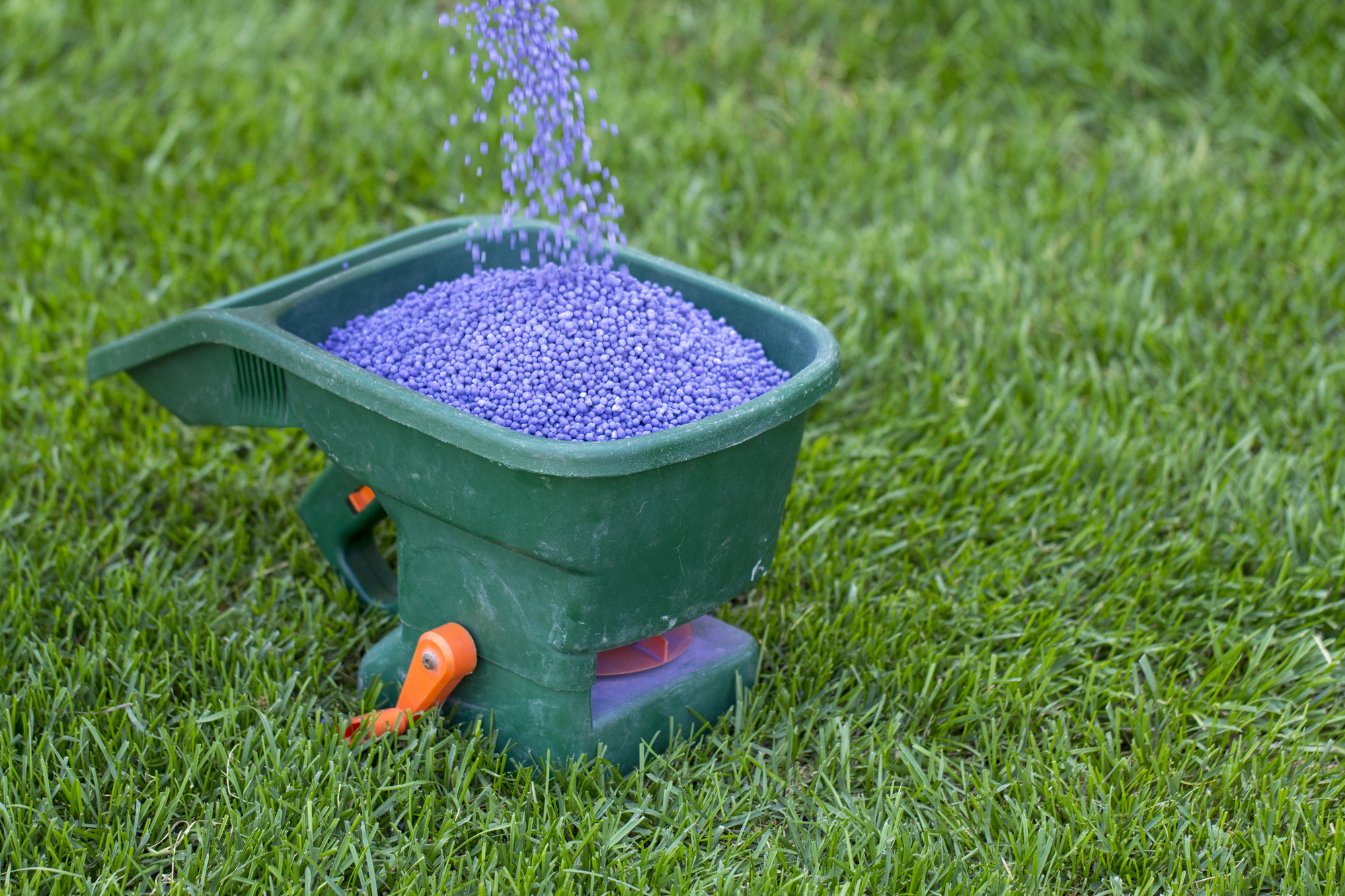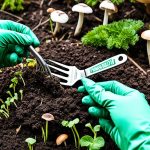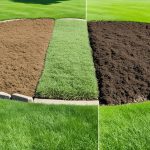As spring turns to summer, many gardeners wonder about the right time to adjust their fertilising schedule. The transition period is critical for maintaining a healthy lawn while adapting to changing weather conditions. The ideal time to stop spring fertilising and switch to a summer plan is typically in late May or early June, when consistent temperatures above 21°C are established and spring growth has stabilised.
This timing allows lawns to develop strong root systems during spring without encouraging excessive tender growth that could suffer in summer heat. Different lawns have varying nutritional needs during the seasonal transition. For lawns, reducing nitrogen and increasing potassium helps prepare for heat stress.
Summer fertilising requires different approaches than spring feeding. Slow-release formulations become more important as temperatures rise, allowing nutrients to be available without causing plant burn. Water-soluble fertilisers should be applied early in the morning or evening to prevent leaf scorch.
Key Takeaways
- Switch from spring to summer fertilising when temperatures consistently reach above 21°C, typically in late May or early June.
- Reduce nitrogen and increase potassium content in fertilisers to help plants withstand summer heat stress.
- Apply summer fertilisers in the morning or evening using slow-release formulations to prevent plant burn and maximise nutrient absorption.
Understanding Spring Fertilising Timing
Spring fertilisation schedules must adapt to changing seasonal conditions. Proper timing ensures plants receive nutrients when they need them most while avoiding waste and potential environmental harm.
Key Indicators for Stopping Spring Fertilisation
The shift from spring to summer fertilising should occur when consistent daytime temperatures reach 21-24°C. At this point, cool-season grass growth naturally slows, and plants’ nutritional needs change significantly.
Watch for these specific signs:
- Growth rate changes: When lawns require less frequent mowing
- Soil temperature: Consistently above 18°C at 10cm depth
- Plant appearance: Colour changes or slower vertical growth
- Calendar timing: Typically late May to early June in most UK regions
Grass species matters too. Cool-season grasses like Kentucky bluegrass and fescues need different treatment than warm-season varieties. Spring fertilisers high in nitrogen should be phased out as temperatures rise to prevent stress on plants.
Weather patterns play a crucial role. If spring has been unusually cool and wet, you might continue spring fertilisation longer. Conversely, an early heatwave signals the need to switch sooner.
Impact of Soil Temperature and Weather Patterns
Soil temperature directly affects how plants uptake nutrients. Spring fertilisers work best when soil temperatures range between 10-18°C. Above this range, nutrient absorption patterns change dramatically.
When soil warms above 18°C:
- Nitrogen volatilisation increases
- Phosphorus becomes less available
- Root activity patterns shift
Weather patterns influence fertiliser effectiveness too. Heavy spring rains can leach water-soluble nutrients from soil before plants use them. This is particularly true for nitrogen, which moves easily through soil.
Dry conditions present different challenges. Without adequate moisture, fertiliser granules remain undissolved on soil surfaces. This can lead to fertiliser burn when temperatures rise.
UK climate variations mean coastal areas may transition to summer fertilising later than inland regions. Local weather patterns should guide your specific timing rather than rigid calendar dates.
Role of Soil Testing in Nutrient Management
Soil testing provides precise information about your garden’s nutritional needs. A proper soil test measures pH levels and available nutrients like nitrogen, phosphorus and potassium (N-P-K).
Testing offers several benefits:
- Prevents over-application of nutrients
- Identifies specific deficiencies that need addressing
- Tracks changes in soil health over seasons
- Helps adjust pH which affects nutrient availability
Collect soil samples from several garden locations at 10-15cm depth. Mix these samples thoroughly for testing. Many garden centres and agricultural extension offices offer affordable testing services.
Test results typically recommend specific fertiliser formulations based on your soil’s actual needs. This targeted approach is more effective than applying general-purpose products. For summer fertilisation planning, soil tests help determine whether slow-release formulations might be more appropriate.
The ideal testing schedule includes once before spring applications and again before transitioning to summer feeding programmes. This ensures your fertiliser choices align with changing plant needs throughout the growing season.
Recognising the Right Time to Transition to Summer Care
Switching from spring to summer lawn and garden care requires attention to specific plant signals and weather patterns. These indicators help gardeners make timely adjustments that protect plants during hotter, drier conditions.
Lawn and Plant Growth Signals
Growth patterns offer clear indicators for transitioning to summer care routines. When warm-season grasses like Bermuda or Zoysia show vigorous growth while cool-season varieties slow down, it’s time to adjust your approach. This typically happens when soil temperatures consistently reach 18-21°C.
Watch for these specific signs:
- Growth rate changes: Lawns requiring more frequent mowing (every 5-7 days) indicate active growth phase
- Seed head formation: Many grasses produce seed heads when transitioning seasons
- Root development: Healthy spring roots should be established before summer heat arrives
Perennials and shrubs also signal the transition time. When spring-flowering plants finish blooming and begin setting seed, they’re ready for summer care. Check for new growth becoming firmer and darker in colour, showing maturity.
Environmental Cues and Climate Considerations
Weather patterns provide reliable indicators for care transitions. Track these specific environmental markers:
Temperature Patterns:
- Consistent day temperatures above 24°C
- Night temperatures staying above 15°C
- Soil temperature at 10cm depth reaching 18°C or higher
Rainfall patterns also guide timing decisions. When natural precipitation becomes less frequent and humidity levels drop, plants need different care approaches.
Regional variations matter significantly. Southern UK gardens typically transition earlier (mid-May) than northern areas (early June). Coastal gardens often maintain milder conditions longer than inland areas.
Monitor weather forecasts for extended dry periods, which signal the need for adjusted watering schedules and moisture conservation techniques.
Identifying Early Signs of Summer Stress
Catching stress indicators early helps prevent serious damage to lawns and gardens. Watch for these warning signs:
In lawns:
- Footprints remaining visible after walking across grass
- Colour changing from vibrant green to blue-grey
- Grass blades folding or curling
- Areas near pavements or walls showing browning first
In garden plants:
- Leaf edges turning brown or crispy
- Wilting despite adequate soil moisture
- Premature flower drop
- Stunted new growth
Morning inspection offers the most accurate assessment of plant health. If plants appear wilted in morning hours, they’re experiencing genuine stress rather than temporary afternoon heat response.
Address these early signals by adjusting watering depth and frequency. Apply water deeply but less often to encourage deeper root growth and prepare plants for summer conditions.
Adjusting Fertilisation for Summer Conditions
As temperatures rise, plants require different nutritional support. Your summer feeding strategy should adapt to higher temperatures, water stress, and changing growth patterns.
Choosing the Right Summer Fertilisers
Summer fertilisers should contain different nutrient ratios than spring versions. Look for products with higher potassium (K) content to improve drought tolerance and disease resistance. Many summer blends contain a nitrogen-potassium ratio around 1:2, compared to spring’s typical 4:1:2 NPK ratio.
For lawns, switch from high-nitrogen “turf builder” products to balanced lawn food. This prevents excessive leaf growth that would suffer in heat and drought. Organic options like blood meal provide gentle nitrogen, while bone meal offers phosphorous for root development.
For flowering plants, phosphorous-rich formulations encourage blooming rather than leaf production. Many professional gardeners reduce nitrogen by half during peak summer months to prevent leggy, weak growth.
Check product labels for UV stabilisers that prevent nutrient breakdown in strong sunlight.
Balancing Macronutrients and Micronutrients
Summer heat affects how plants process nutrients. Reduce nitrogen application by 25-40% compared to spring rates to prevent rapid, weak growth. Increase potassium to strengthen cell walls and improve water regulation within plant tissues.
Iron becomes particularly important in summer as it helps maintain green colour without forcing excessive growth. Apply iron supplements separately from main fertiliser when yellowing appears between leaf veins.
Consider calcium supplementation for fruiting plants to prevent blossom end rot, especially during irregular watering periods. Magnesium helps with chlorophyll production and energy transfer in hot conditions.
Micronutrients like boron and manganese may need more frequent application in summer as they’re easily leached by heavy watering or rainfall. Look for complete micronutrient packages for heavy feeders like tomatoes and roses.
Liquid Versus Granular Application Methods
Summer conditions affect fertiliser delivery methods differently. Liquid fertiliser provides immediate nutrition but requires more frequent application—typically every 7-14 days at half strength. It’s ideal during hot periods as it combines fertilisation with watering.
| Application Method | Advantages | Disadvantages |
|---|---|---|
| Liquid | Quick uptake, even distribution | Frequent reapplication needed |
| Granular | Longer-lasting, fewer applications | Requires watering in, uneven distribution possible |
Foliar feeding (spraying diluted liquid fertiliser directly on leaves) becomes more effective in summer as plants absorb nutrients through their stomata. Apply foliar feeds in early morning or evening to prevent leaf burn.
Granular fertilisers should be watered in thoroughly after application to prevent burning roots in hot soil. Consider that granules may dissolve unevenly in summer’s alternating dry-wet conditions.
Understanding Slow Release Options
Slow release fertiliser provides significant advantages in summer gardening. These products use polymer coatings or organic compounds that break down gradually, releasing nutrients over 2-6 months.
Temperature-controlled slow release formulations are particularly useful—they release more nutrients during warm periods when plants grow actively and less during extreme heat when growth naturally slows. Look for products specifying “temperature-controlled release” on the label.
Organic slow release options like composted manure pellets provide gentle feeding while improving soil structure. They typically release nutrients at 10-15% of the rate of synthetic fertilisers, making them safer during heat stress periods.
For container gardens, incorporate slow release fertiliser into the top 5cm of soil rather than surface application to prevent nutrient loss from heavy watering. Many gardeners combine a base of slow release fertiliser with occasional liquid feeding for high-demand plants.
Heavy feeders benefit from time-release spikes inserted near (but not touching) their root zones.
Modifying Lawn and Garden Practices for Summer Success
As temperatures rise, your lawn and garden needs change significantly. The right adjustments to your maintenance routine will help plants survive the heat while conserving water and protecting soil health.
Mowing and Watering Strategies
Set your mower blade higher during summer months—about 7-9 cm for most grass types. Taller grass shades soil, reducing water evaporation and preventing weed seeds from germinating. This height also promotes deeper root growth, making your lawn more resistant to dry conditions.
Water deeply but less frequently to encourage roots to grow downward. Early morning (4-7 am) is the best time to water, as less moisture is lost to evaporation. A good rule is to provide 2.5-4 cm of water per week, including rainfall.
Consider installing a rain gauge or soil moisture meter to avoid overwatering. If walking across your lawn leaves footprints that don’t spring back, it’s time to water.
During heatwaves, don’t worry if your lawn turns slightly brown—most grasses naturally go dormant during extreme heat and will recover when temperatures cool.
Managing Drought and Moisture Levels
Create a practical watering schedule based on your local water restrictions and weather forecasts. Group plants with similar water needs together to avoid wasting water on drought-tolerant plants.
Apply water directly to the soil rather than leaves to reduce disease and water waste. Drip irrigation and soaker hoses are 30-50% more efficient than sprinklers.
For potted plants, check moisture levels daily during hot weather. Use saucers under pots to catch excess water that plants can absorb later.
Test garden soil moisture by inserting your finger 5 cm deep—if it feels dry at that depth, it’s time to water. Clay soils hold moisture longer than sandy soils, so adjust your watering accordingly.
Consider applying anti-transpirant sprays to broad-leaved plants during severe drought to reduce water loss through leaves.
Mulching and Soil Amendments
Apply a 5-7 cm layer of organic mulch around plants and trees to conserve moisture, suppress weeds and regulate soil temperature. Keep mulch 5 cm away from plant stems and tree trunks to prevent rot.
For vegetable gardens, straw or shredded leaves work well. For ornamental beds, bark chips or cocoa hulls provide an attractive finish while improving soil health.
Test your soil pH in early summer. Most plants prefer a slightly acidic to neutral pH (6.0-7.0). Add lime to raise pH or sulphur to lower it if needed.
Address specific nutrient deficiency signs promptly. Yellow leaves often indicate nitrogen shortage, while purple-tinged leaves suggest phosphorus deficiency. Apply targeted amendments rather than broad-spectrum fertilisers during summer heat.
Incorporate well-rotted compost as a top dressing to improve soil structure and water retention. This slow-release approach provides nutrients without the risk of fertiliser burn during hot weather.
Managing Pests, Weeds, and Plant Health During the Transition
The shift from spring to summer requires careful monitoring of garden threats while adjusting fertilisation practices. Managing weeds, pests and nutritional needs during this time helps plants develop resilience against summer stresses.
Broadleaf and Grassy Weed Control
Spring-to-summer transition is when many weeds establish themselves. Broadleaf weeds like dandelions and plantain become particularly aggressive as temperatures rise. Apply selective herbicides when temperatures are between 15-24°C for best results.
Grassy weeds such as crabgrass begin to thrive as soil warms. Pre-emergent herbicides should be applied before soil temperatures reach 12°C consistently. For established grassy weeds, use targeted post-emergent products.
Manual removal works best when soil is moist. Pull weeds with their entire root system to prevent regrowth. Consider mulching with a 5-7cm layer to suppress weed growth while retaining soil moisture as summer approaches.
Corn gluten meal offers a natural pre-emergent option, inhibiting weed seed germination while adding nitrogen to soil. Apply it 4-6 weeks before expected weed emergence.
Mitigating Common Summer Pests and Diseases
As temperatures rise, pest activity increases significantly. Aphids, spider mites and caterpillars become more active during the transition period. Regular inspection of leaf undersides and new growth helps detect infestations early.
Signs of pests include leaf discolouration, sticky residue (honeydew), or visible insects. Introduce beneficial insects like ladybirds and lacewings as natural predators before infestations become severe.
Fungal diseases spread rapidly in humid summer conditions. Powdery mildew and black spot thrive during the transition period. Increase plant spacing to improve air circulation and water at the base rather than overhead.
Apply copper-based fungicides or sulphur sprays preventatively when forecasts predict extended periods of humidity. For organic gardens, neem oil provides modest control of both pests and diseases while being environmentally friendly.
Detecting and Correcting Nutrient Imbalances
Plants entering summer often display nutrient deficiencies as growth rates increase. Yellow leaves typically indicate nitrogen deficiency, while purple-tinged foliage suggests phosphorus shortage. Conduct soil tests to identify specific deficiencies before applying supplements.
Magnesium deficiency, common during transition, appears as yellowing between leaf veins while veins remain green. Apply Epsom salts (magnesium sulphate) at 20g per square metre to correct this issue.
Micronutrient deficiencies become apparent as plants enter heavy growth phases. Iron chlorosis shows as yellowing leaves with green veins, particularly in alkaline soils. Use chelated iron products for quick correction.
Foliar feeding provides rapid nutrient uptake during transition periods. Apply liquid seaweed or fish emulsion every 2-3 weeks to supply trace elements and stimulate plant immunity against stress.
Promoting Bloom Production and Fruit Set
Transitioning from spring to summer fertilisation is critical for strong bloom development and fruit set. Reduce nitrogen levels and increase phosphorus and potassium to shift plants from vegetative growth to reproductive phases.
Apply bloom-boosting fertilisers with NPK ratios like 5-10-10 or 2-10-10 for flowering plants. For fruiting plants, products with higher potassium (such as 4-6-12) improve fruit quality and yield.
Temperature fluctuations during transition periods can disrupt pollination. Use row covers on cold nights to protect blooms and remove during day for pollinator access. Hand-pollination helps ensure fruit set when pollinator activity is low.
Water deeply but less frequently to encourage strong root development and reduce blossom-end rot in fruits. Add calcium supplements if soil tests indicate deficiency, as calcium is essential for cell wall development in fruits.
Essential Maintenance Tips for Lasting Summer Results
Maintaining your lawn and garden through summer requires specific techniques that build upon your spring care routine. The right approach to pruning and fertilisation will ensure your plants thrive during the warmer months.
Regular Pruning and Dethatching
Pruning is vital for plant health during summer months. Remove dead or yellowing foliage to redirect energy to healthy growth areas. This practice also improves air circulation, reducing fungal disease risks in humid summer conditions.
Dethatching should be performed when thatch exceeds 1.5 cm. Thatch is the layer of dead grass that accumulates between soil and living grass. Excessive thatch blocks water and nutrients from reaching roots. Use a dethatching rake for small areas or hire a mechanical dethatcher for larger lawns.
The ideal time for dethatching is early summer when grass is actively growing but before intense heat arrives. After dethatching, water thoroughly to help the lawn recover from the stress of the process.
Optimising Fertiliser Scheduling
Summer fertilisation differs significantly from spring applications. Switch to slow-release fertilisers with higher potassium content (look for products with an NPK ratio featuring higher last number). Potassium strengthens plants against heat stress and drought conditions.
Apply summer fertiliser in early morning or evening to prevent burning. Water lightly after application to help essential nutrients reach the root zone without washing away.
Reduce fertiliser frequency during the hottest weeks. Most lawns benefit from applications every 6-8 weeks rather than the 4-week schedule common in spring. Be particularly careful with nitrogen levels, as excessive nitrogen promotes rapid growth that demands more water.
Consider soil testing to identify specific nutrient deficiencies. This targeted approach prevents wasteful over-application and ensures plants receive precisely what they need during summer’s challenging conditions.





